3 Ways to Make Weighted Stuffed Animals [2024 updated]

If you're reading this, chances are you're a fan of crafting and weighted stuffed animals—especially those with a little extra weight for comfort. In this guide, I'll walk you through three distinct methods to create your very own weighted stuffed animal. Whether you're a novice crafter or a seasoned DIY enthusiast, these techniques range from simple to challenging, allowing you to pick the perfect project based on the materials you have at hand and your crafting skills. Get ready to bring your cuddly creations to life!
Method 1: Use existing ordinary plush toys to make weighted plush toys
This method is quite easy because one of the most important raw materials - old stuffed animals - is what you already have. It is applicable to old plush toys, which can be achieved by modifying and replacing the stuffing.
Preparation for making a weighted stuffed animal
To embark on crafting your weighted stuffed animal, you'll need to gather some essential tools and materials. Here’s what you’ll need:
- Sewing Machine: For stitching the pieces together efficiently.
- Needle and Thread: For any hand-sewing details.
- Weights (Stuffing): These can be specialized poly pellets, sandbags, or even rice, depending on your preference.
- Fabric Adhesives: To secure any non-sewable components.
- Scented Material: If you want your stuffed animal to emit a pleasant fragrance.
- Seam Ripper: Handy for correcting any stitching mistakes.
With these tools and materials at your disposal, you’re well on your way to creating a comforting and durable weighted stuffed animal.
Step 1 Cut the plush toy along the original stitches
Start by carefully cutting along the original stitches of the plush toy. This technique ensures that you maintain the integrity of the toy's design and makes it easier to restore its original appearance once you're done. You don’t need a large incision—just enough to remove the original stuffing and make any necessary repairs or adjustments. This step sets the stage for a smooth stuffing process, whether you're replacing the filling or mending any wear and tear.
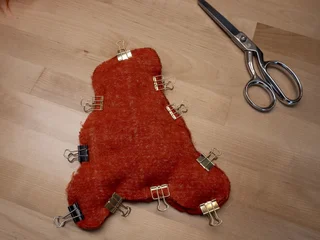
Step 2 Remove the original filling material
To begin, gently pull out the original filling material. For hard-to-reach areas, like the extremities, use tools such as tweezers. This allows for a thorough removal without damaging the fabric.

Step 3 Add new weighted fill material
Choose the fill material based on the desired weight and fullness of your plush toy, ensuring it's safe and non-toxic for skin contact. Here are some options:
Plastic Poly Pellets: Plastic poly pellets are one of the most common fillers used for weighted plush toys. This material is also commonly used to fill the bases of dolls to help them sit up straight. The poly pellets are non-toxic and completely safe.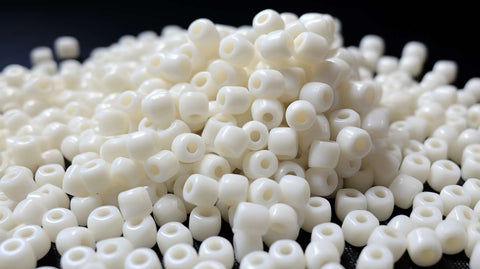
Glass beads: Glass beads has a smooth surface. It is an environmentally friendly alternative to polyethylene pellets, and is completely hypoallergenic. These materials are machine washable and dryer safe.
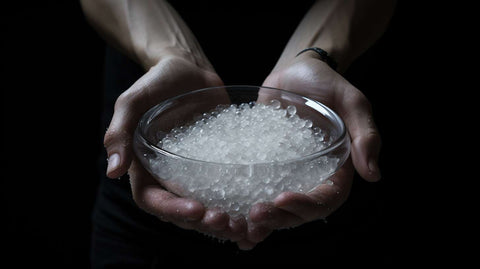
Sands: Sand can also be used as a fill material for weighted plush toys. Note that sand is tend to clump, especially when it gets wet. Sand is more likely to leak through stitching than other materials. If there is a leak, sand is also more difficult to clean off than pellets or beads.

Rice, beans and other grains:Sometimes grains such as rice, beans, corn are used as filling materials for weighted plush toys. They are easy to get, but eventually they are not durable materials. So this type of material is not recommended.

Step 4 Sew the opening and finish making the weighted plush toy
Finally, sew along the original opening to close your plush toy. Congratulations! You’ve just completed your first weighted plush toy!
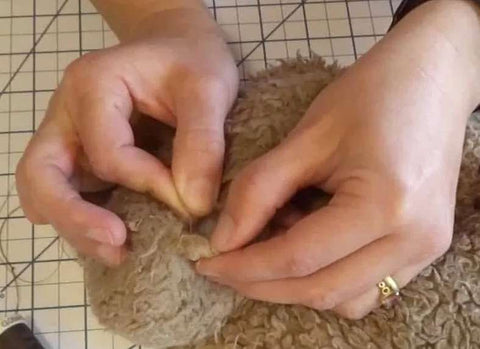
Method 2: Make a weighted stuffed animal completely by yourself
Creating a weighted stuffed animal is simpler than you might imagine. To begin, come up with a design that you like. Then, collect the materials you’ll need and cut out the pieces for your plush toy. Once you have everything prepared, sew the pieces together to make your weighted stuffed animal.
Make your own weighted stuffed animal based on designs
First, you need to decide on the art style you want to use when making your own weighted plushies. Instead of drawing the design yourself, you can use AI tools to help you present ideal results. One such tool is Midjourney, which allows you to create beautiful drawings by entering a simple description.
STEP 1. Type /imagine and use the specific description to express what kind of weighted plush toy you want.

STEP 2. Midjourney will generate four images for you. You can generate designs several times according to your preference and choose the one you like the most. You can also add more details on top of that.
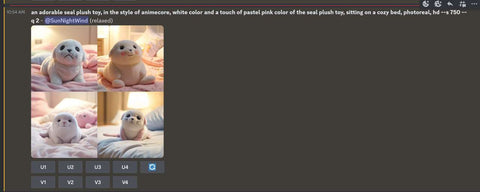

STEP 3. You can make a design drawing that closely resembles your ideal reference image. To create the theme you desire, just upload your favorite image as your foundation. After you complete the description words, Midjourney will create an image in the same aesthetic as your original material. You may now proceed.

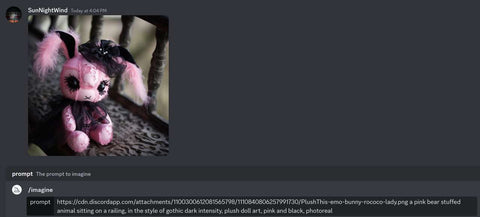
Prepare the materials needed to make a weighted stuffed animal
In this part, you'll need to decide which facrics to use and what materials to filled in the weighted stuffed animal. Please follow the above methods and steps to prepare materials for your weighted plush toys.
Method 3: Create weighted plush toys through Plushthis's custom service
Plushthis is a company that can turn anything in your life into cute stuffed animals. They offer a customization service where you can create your own weighted plush toys by giving them anything you want. You can also buy retail or wholesale products directly from their website.
Design your weighted plush toy through AI
You can still make your own weighted stuffed animals even if you know nothing about art, painting or design. Follow the instructions above, you can use AI tools to generate your desired weighted plush toy rendering and submit it to Plushthis. Expert designers will assess the fabric, stuffing and other materials to accurately reproduce your design. For more information, please contact customer service.
Participate in Plushthis's crowdfunding project
On a daily basis, Plushthis designs and produces an extensive amount of weighted stuffed animals using artificial intelligence. Plushthis will also choose the top designs and start a crowdfunding campaign. As a way to acquire a beautiful weighted stuffed animal, be sure to join in the project if you are interested in a certain product.
FAQ
How to clean weighted stuffed animals?
Cut the fabrics and hand wash it. Remember to be gentle and avoid harsh chemical detergent or rough scrubbing when washing your stuffed animals. Try to use a hand wash laundry detergent or other mind cleaning solution to protect the fabrics. Then you need to sew the fabrics back to your plushies. Small stains can be wiped directly with cleaning wipes.
Can you use rice to weigh down a stuffed animal?
Yes, you can use rice to weigh down a stuffed animal. However, it is not recommended for children below the age of two and people with breathing issues. Over time, rice can attract bugs and vermin and eventually rot, which can damage the fabric of a stuffed animal. Sometimes it even contains insect eggs that could hatch.
Are weighted stuffed animals Safe for babies?
Generally speaking, weighted plush toys can be safe for infants and toddlers if they are made with quality materials and properly constructed. However, it is important to note that the safety of these toys also depends on whether the fabric and filling materials meet the safety standards for infant use. For example, the fabric should be soft and breathable, while the filling should be hypoallergenic and free of harmful chemicals. It’s always a good idea to check the manufacturer’s label or website for information on safety standards and testing before purchasing a weighted stuffed animal for your child.
Summary
Weighted stuffed animals are not just ordinary toys; they are crafted with added weight to offer deep pressure stimulation, providing a calming effect similar to a cozy cuddle. In this guide, we explored three distinct methods to create your own weighted plush toy.
Of course, for the DIY lover in you, I also recommend you to read other articles at the end, such as "How to make a normal stuffed animal", and "How To Knit a Stuffed Animal". Thank you for reading.


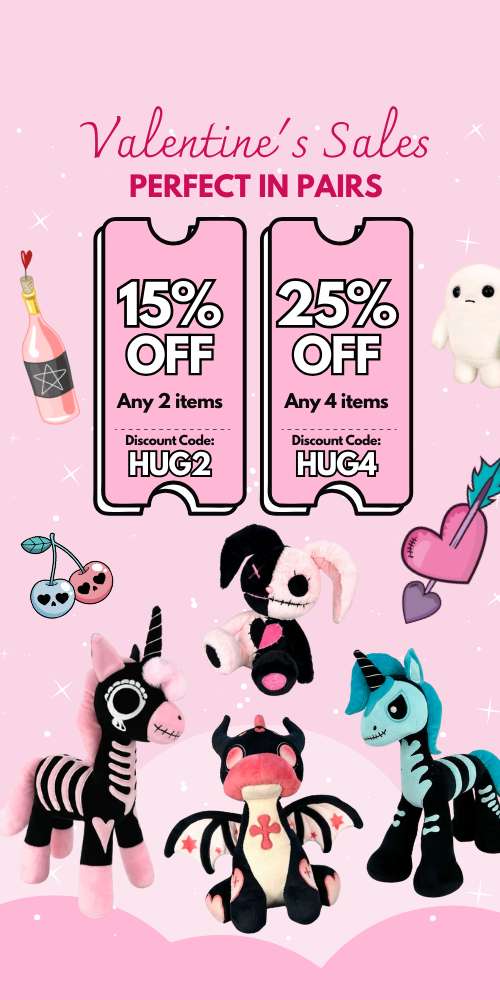


1 comment
Thank you!